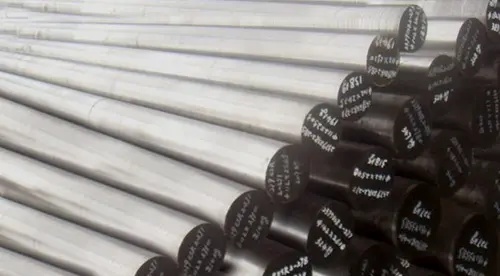
What Is High Speed Steel?
High speed steel (HSS) refers to any steel alloys that can cut materials faster than traditional high-carbon steels previously used in cutting tools. More specifically, the American Society for Testing and Materials (ASTM) defines high speed steel in their A600 specification as any high-carbon steel (minimum of 0.65% by weight) containing tungsten and/or molybdenum, along with chromium, vanadium, and sometimes cobalt.
Properties
Although the term “high speed steel” describes multiple alloys, all alloys within this category generally have exceptional hardness (at least 64 HRC at room temperature), abrasion resistance, and resistance against softening at high temperatures, primarily due to its alloying metals and heat treatment used.
To achieve the hardness needed for high speed steel, austenitizing is often used. In this process, the steel is heated above its critical temperature, which transforms its crystal structure from ferrite to austenite. Once the steel reaches this phase, its quenched in a salt bath or by air cooling, and then tempered to convert any remaining austenite to martensite.
Here’s a general breakdown of how some of the alloying elements influence the properties of high speed steel:
- Molybdenum steels have higher toughness
- Tungsten steels display higher hot hardness (the hardness retained at very high temperatures).
- Vanadium improves wear resistance and hot hardness. A higher proportion of vanadium requires an increase in carbon content to counteract the loss of toughness, though. High vanadium steels are used for specialty cutting tools where wear resistance and heat tolerance are paramount.
- Chromium is included mainly to enhance hardenability and reduce oxidation damage during heat treatment.
- The inclusion of cobalt improves hot hardness in high speed steels, though brittleness increases as well
- Manganese and phosphorus are kept to a minimum, as these elements significantly increase the brittleness of steels and can induce cracking during quenching.
Advantages
- Better reliability in high heat, high-impact, and high-speed applications.
- Less maintenance and breakdown due to its wear/abrasion resistance.
- Less risk of damage in high-load or heavy-impact environments.
Applications
- Tool bits
- Milling cutters
- Saw blades
- Drills
- Taps
- Broaches
- Punches
- Dies
- Other progressive stamping components
- Chisels
- Files
- Blades
- Knives
Classifications
There are over 40 classifications of high speed steel recognized by the American Iron and Steel Institute (AISI). Two general categories comprise these various classifications: those primarily alloyed by tungsten and those alloyed by molybdenum.
Each grade is designated with T or M, respectively, as well as a unique number distinguishing it from other grades. Despite this naming, all but two M-type steels contain some tungsten, and all T-types but one contain some amount of molybdenum; both of these form the metal carbides essential to achieving the desired properties. ASTM specifications exist for 7 T-types and 17 M-types.
High Speed Steel Versus Other Alloys
Non-HSS alloys don’t offer the same hardness or high-speed capabilities, but HSS can become brittle due to its extreme hardness, which is primarily why HSS isn’t recommended if malleability is important in an application.
Surface Treatments for HSS
High speed steel tools often receive a bright or black oxide finish for use with non-ferrous or ferrous metals, respectively. Other coatings and treatments are possible, as well. Nitriding diffuses nitrogen into the surface of the steel during heat treatment, producing a case-hardened surface that shows higher wear resistance at the expense of notch hardness.
Another common treatment is titanium nitride (TiN) via physical vapor deposition, which enhances edge retention significantly. This, combined with a lower coefficient of friction, means an extended lifespan and improved machining, though TiN-coated tools react adversely with titanium or nickel alloys.
